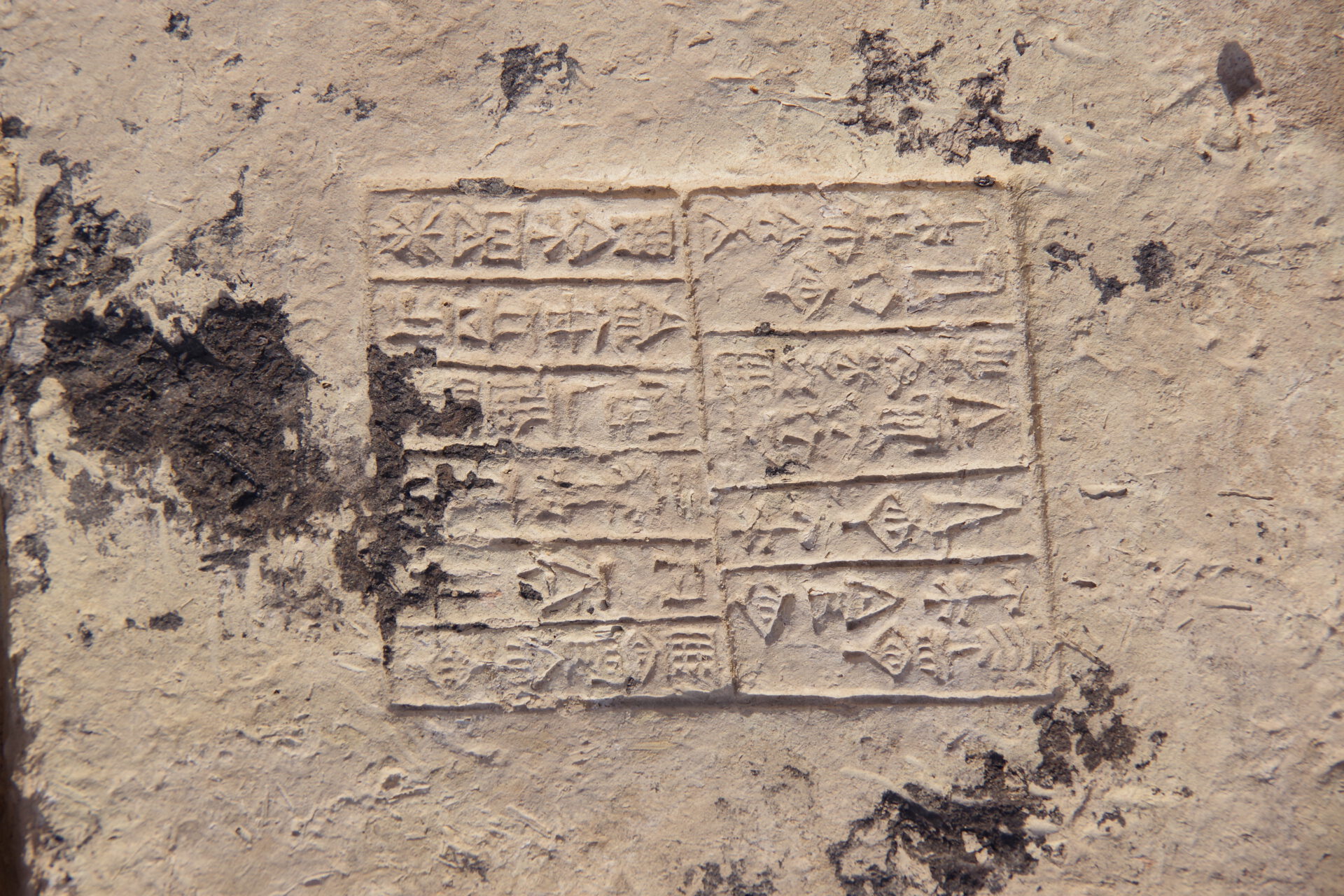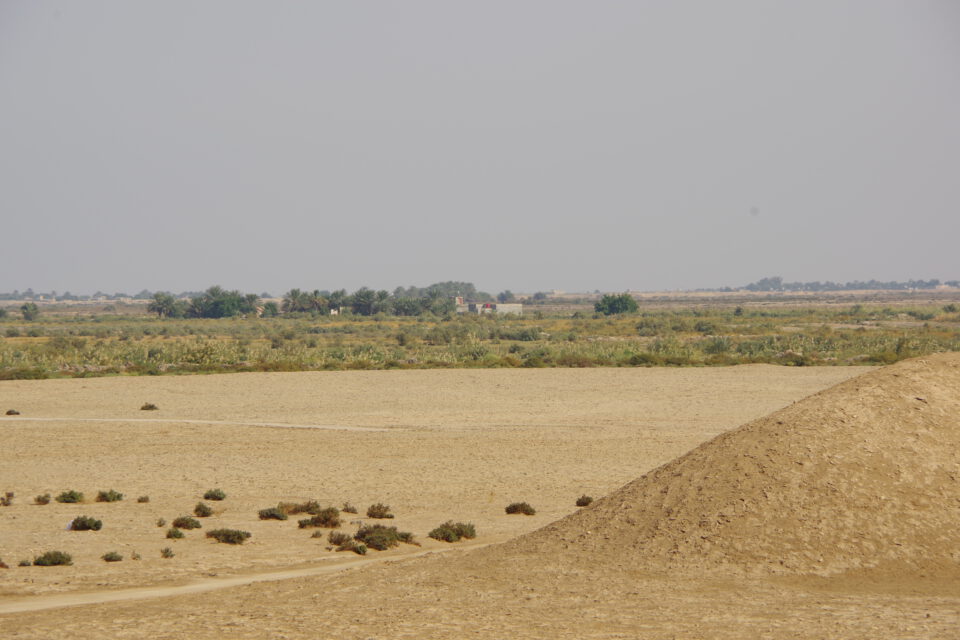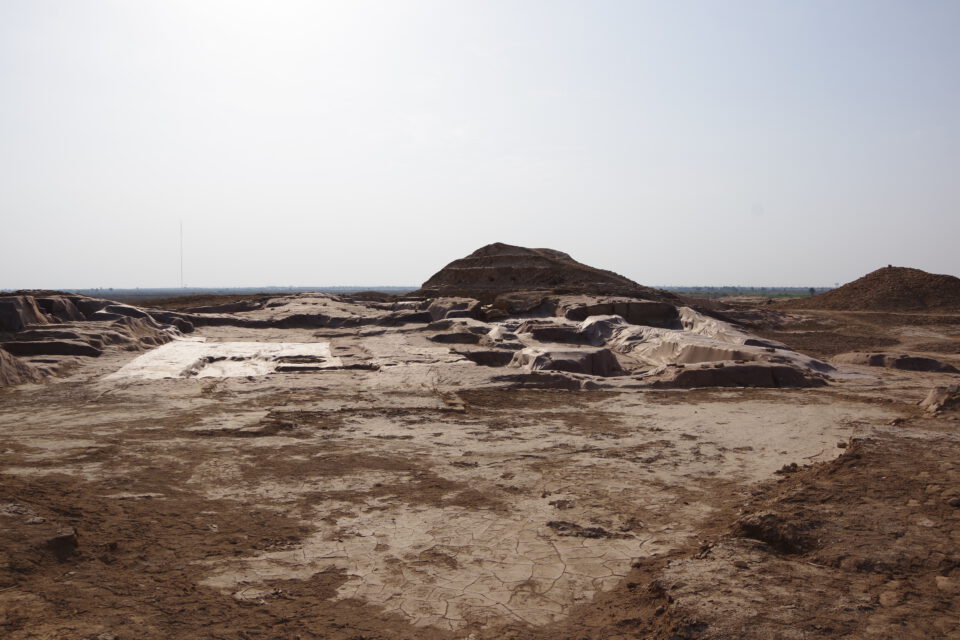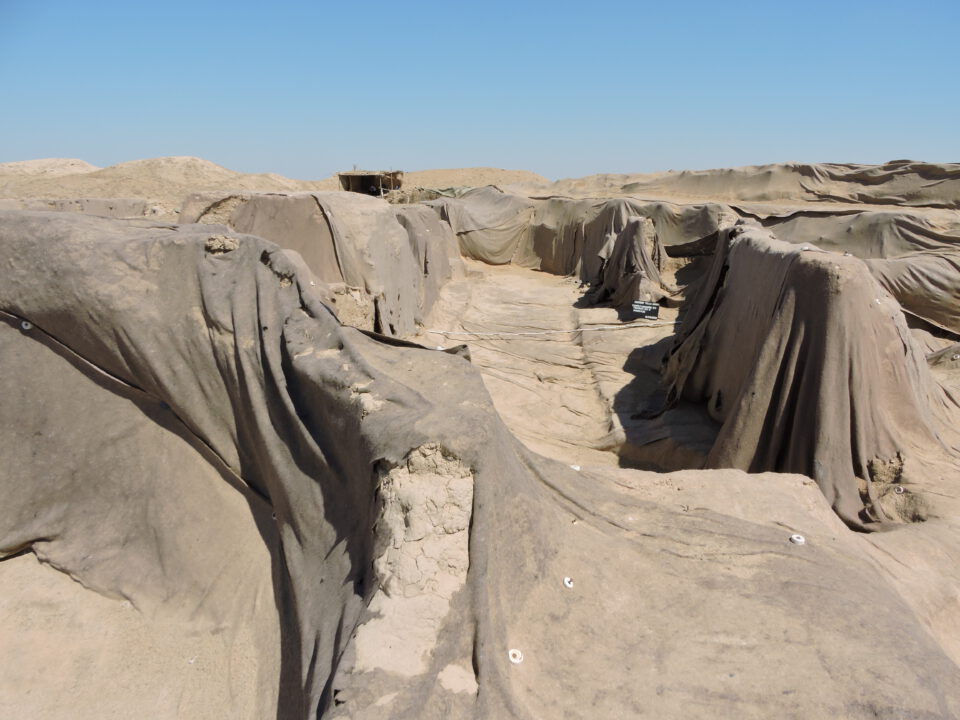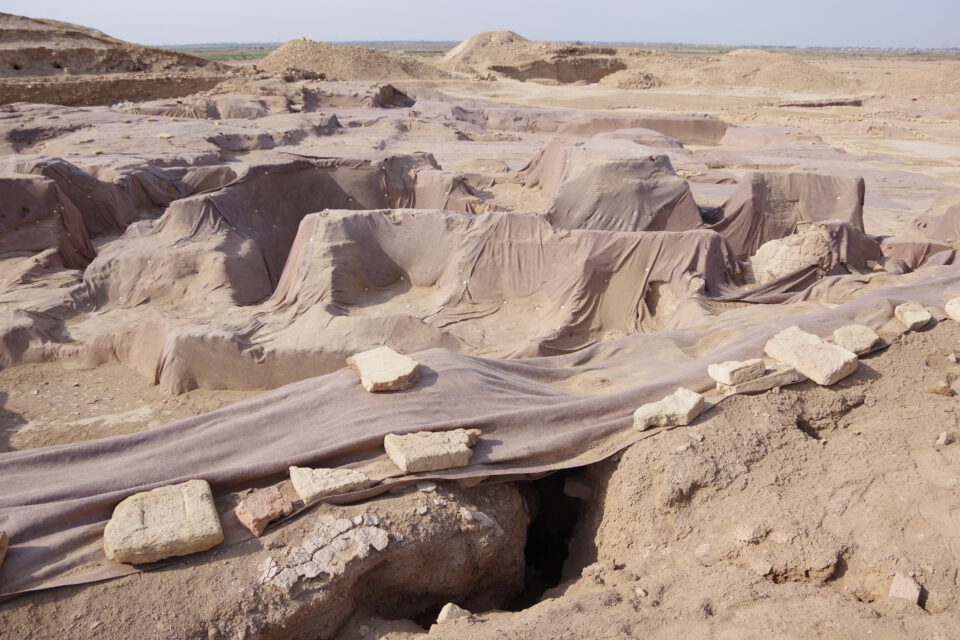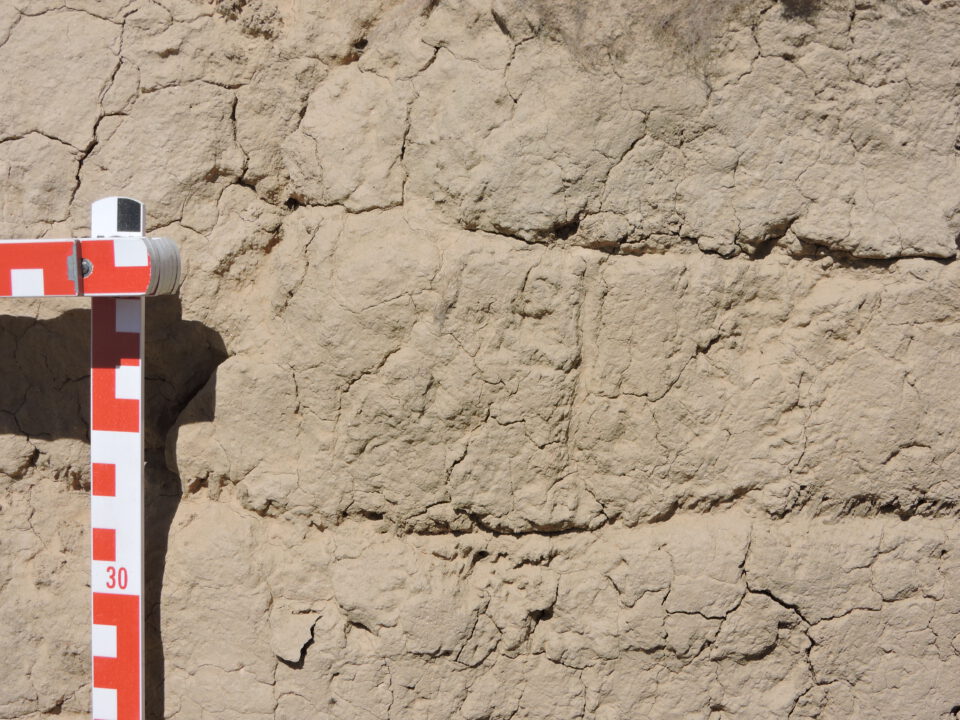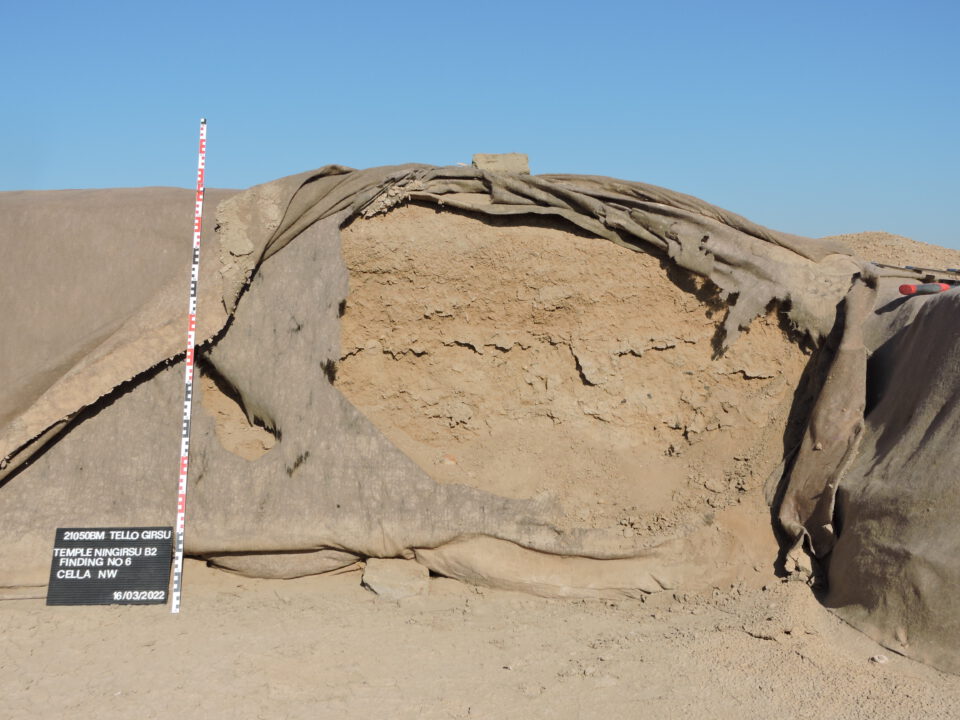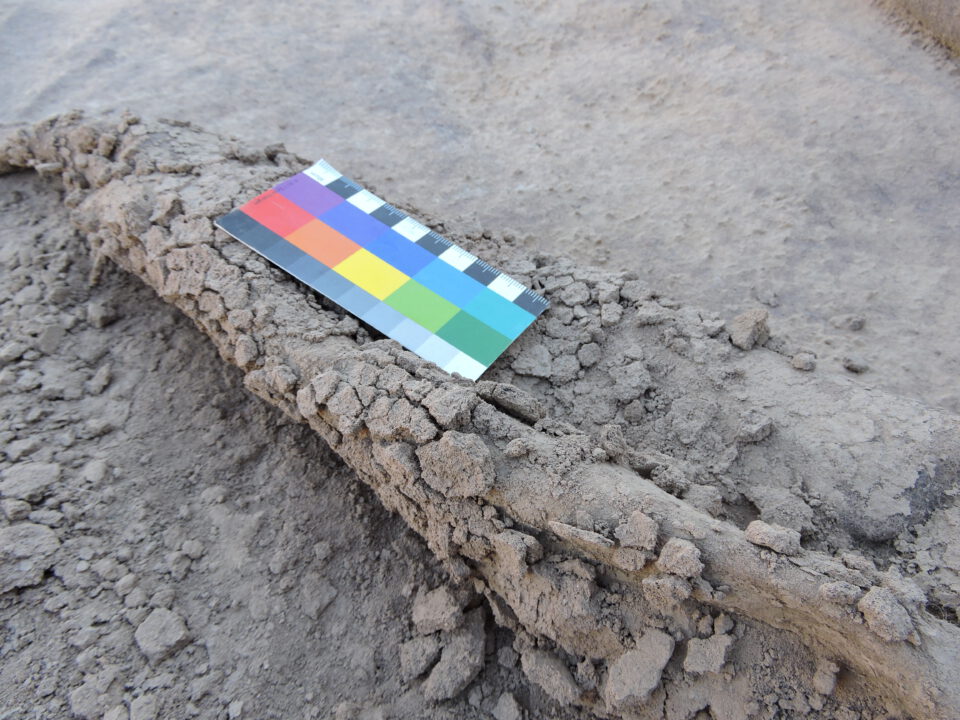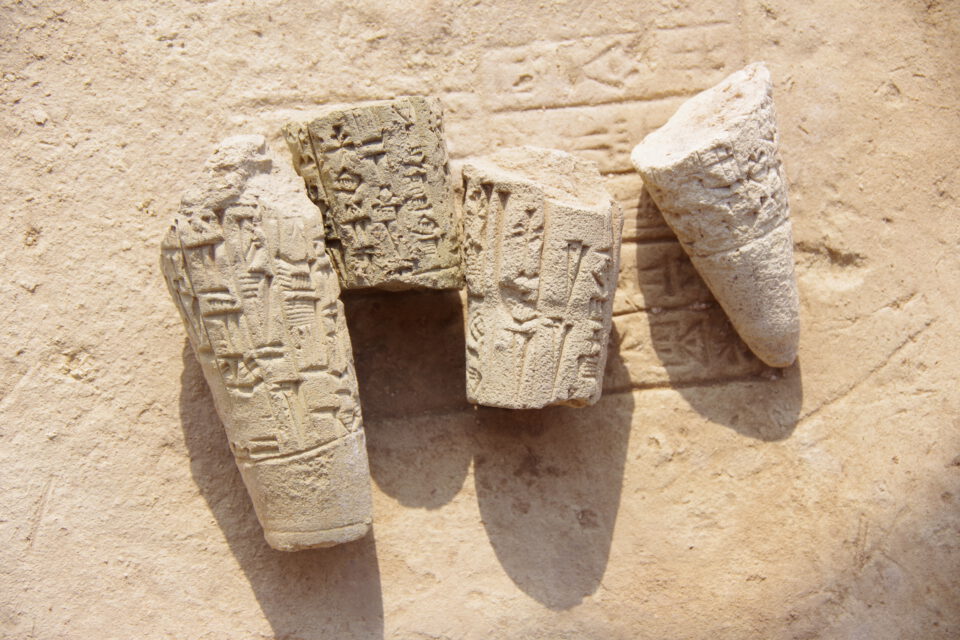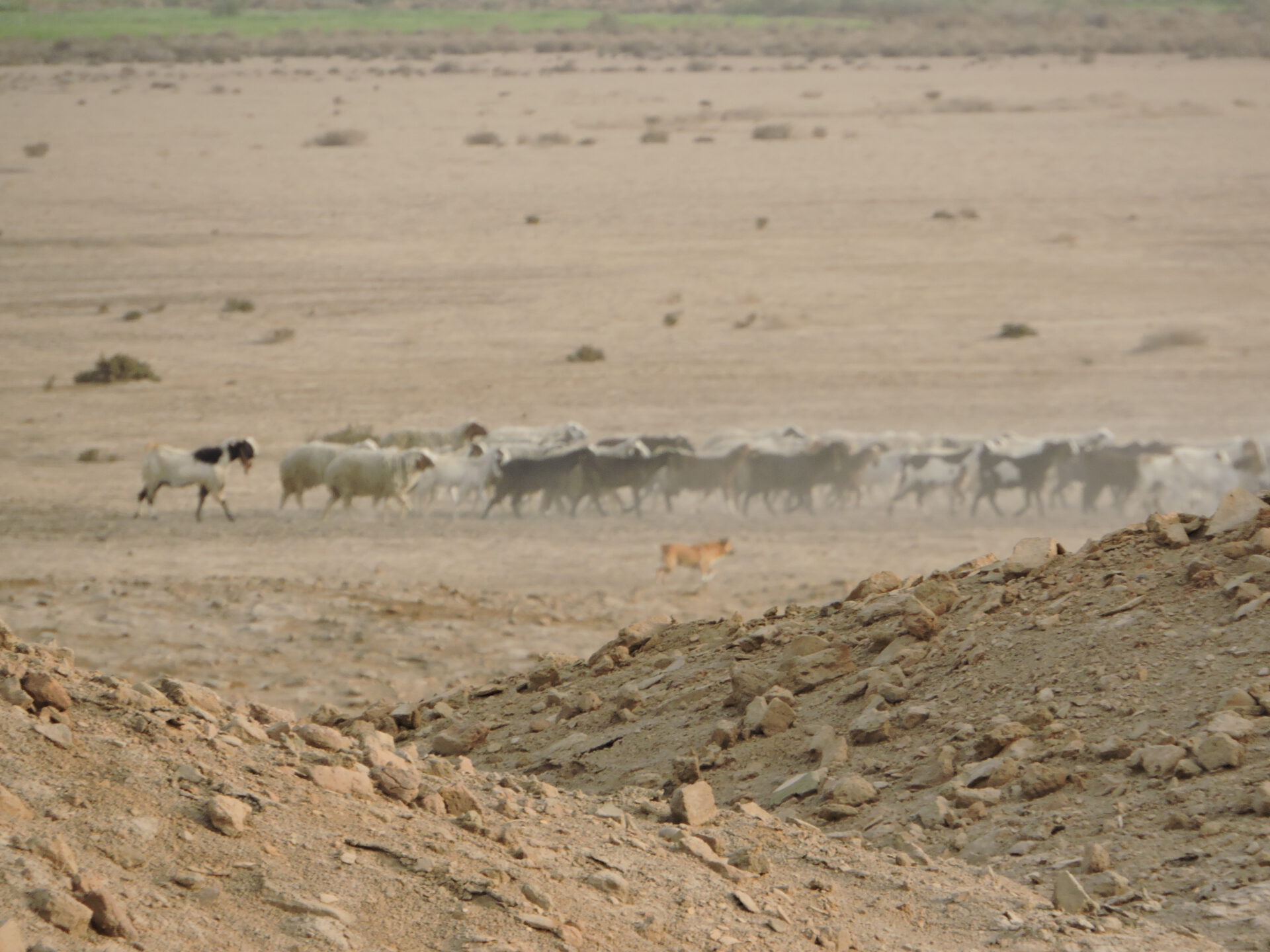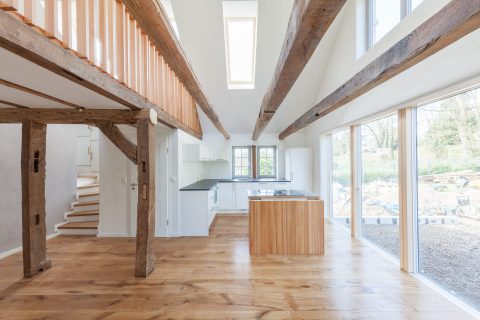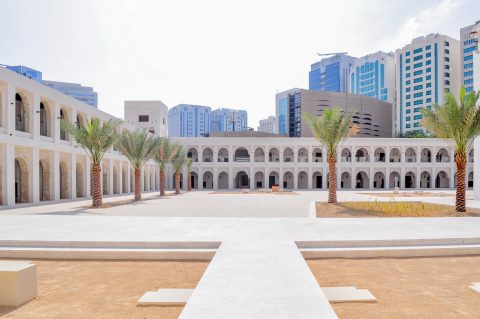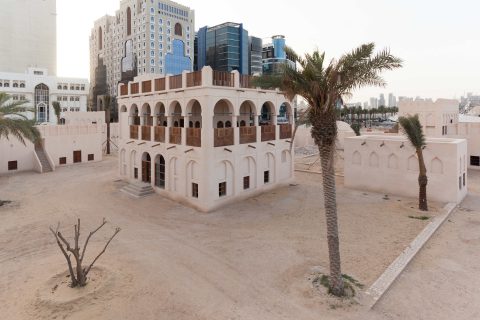Girsu was a Sumerian city in southern Mesopotamia, between the Euphrates and Tigris rivers, found in what is now southern Iraq. The modern Arabic name is Tello (Tall Lawh). The settlement as well as the regional and supra-regional importance of Girsu could be traced back to the 4th millennium BC, whereby this city also developed into the religious centre of the then territorial state of Lagas in the 3rd millennium BC.
Girsu was extensively excavated between 1877 and 1933. Until 1900, the excavations were led by the Frenchman Ernest de Sarzec, who discovered the so-called Gudea statues. A refilling of the findings had not taken place, and the excavation site fell into oblivion. This city, rediscovered and re-excavated in 2016 under the direction of Sebastien Rey on behalf of the British Museum, comprises fragile remains of monumental architecture, including the Temple of Ningirsu, built entirely of earth blocks, and also a structure made of bricks, the so-called Bridge of Girsu. The archaeological layers span a period of over 5000 years and included cuneiform tablets that would first prove the existence of the Sumerians. The powerful god Ningirsu was the city’s patron god, who waged a fierce battle with the demons of the primeval mountains where the Tigris and Euphrates rivers rise, thus enabling the introduction of irrigation and agriculture in Sumer. Another central role was played by the ruler Gudea, who ruled Girsu four thousand years ago, and who undertook and completed the renovation of magnificent temples. Two thousand years after Gudea, the temple complex was remodelled by the high priest and Aramaic king Adad-nadin-ahhe. Fascinated by ancient Sumerian rituals, he adhered to the tradition of inscribing his name in Aramaic and Greek on the brick foundations. Adad-nadin-ahhe also collected the statues of Gudea as sacred antiquities and embodiments of the ancient kings, parts of which can be seen in the Louvre in Paris.
The temple of Ningirsu was built on a slight elevation. The abundance of excavation material, still from earlier French excavations, was placed as embankments in the immediate vicinity of the findings. As a result, water brought in by weathering now finds its way into the temple complex, endangering the earth block masonry findings, which are up to 145 cm high. The British Museum invited ZRS engineers to join the international and interdisciplinary team because of their expertise in the conservation of architectural remains made of earthen materials, in order to determine the current condition of the temple of Ningirsu, to develop suitable concepts for the conservation of this complex, and to develop authentic conservation materials.


